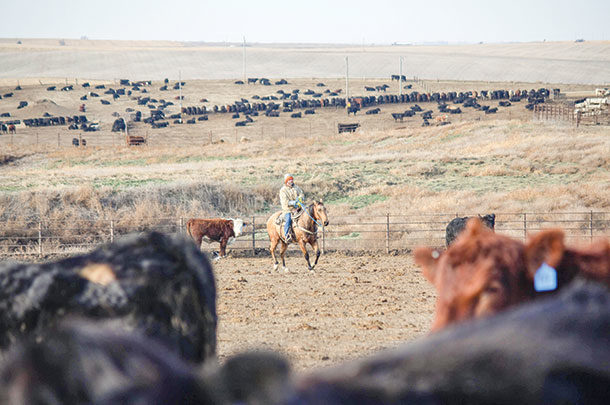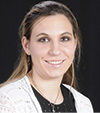Pulling and doctoring sick animals is a chore in and of itself. Not only is it taxing on the people involved, but also the animals.An element that can significantly make this process better or worse is the hospital pen – specifically in terms of its design.
On any beef operation, be it cow-calf, feeding or anything in between, a reliable hospital pen is a must-have. But quite ironically, it isn’t uncommon for these designated areas to go neglected, compromising the most vulnerable animals most in need of special attention.
“Hospital pens are the most abused pens in the feedlot,” said Dan Thomson of Iowa State University on a Nebraska Extension webinar series titled “Health programs for receiving calves.”
A prime solution to this issue involves a critical evaluation of these facilities through the lens of animal comfort and requirements.
Common mistakes
An error Kip Lukasiewicz of the University of Illinois commonly sees is improper placement.
“We don’t think about location,” he says, “of all the different procedures that we might be doing.”
Oftentimes, he explains, facilities are not designed to treat all the types of issues that might be incurred in the yard. As a result, sometimes the ultimate diagnoses aren’t as timely or correct as they could be if the proper equipment and pen design was in place from square one.
“We have to think about the type of cases that we’re going to receive and try to build or adapt for all those things,” Lukasiewicz says. “Some people say that’s impossible. However, today our two top pull diagnostic categories are either respiratory disease or musculoskeletal disease.”
Another important thing often not addressed is spacing issues – both within hospital pens and around them. For sick animals, Thomson said designated hospital pens should have at least as much space as the home pen – if not more.
“Just imagine if you were sick. Would you want to have more space, or do you want to share a room with someone or five people? What makes you feel better?” he offered as a comparison.
Establishing a hospital pen is, essentially, planning for a degree of uncertainty. You never know what type of animals might be occupying it, and at certain times of the year it could be relatively empty or very full. But it is better to err on the side of caution. Elanco technical consultant Bruce Hoffman, DVM, says that overcrowding cattle in hospital pens is the number one thing responsible for poor treatment response.
“We’ve seen more and more operations making a shift toward pulling cattle to treat and then returning them to their home pen,” he explains. “In this case, it is helping manage potential overcrowding in the hospital pen.”
Speaking externally, Lukasiewicz recommends that there is a significant distance separating the hospital pen from the healthy herd – about a drover’s lane away on all sides.
“The farther away you get them, the better off you are,” he adds, “because you can’t necessarily always control our environment or things like that. It’s (also important) to make sure that we have proper drainage that isn’t interfering with any other existing pens.”
For drainage, he recommends having an 18-foot buffer zone between pens and vulnerable areas.
Design must-haves
Animal flow and movement are crucial points when designing a hospital facility that is both safe and effective.
These should be designed like any other facilities where the shipping and receiving process comes first, Lukasiewicz says. This is imperative because, like people, sick animals are uncomfortable, making them temperamental and unpredictable.
Along with that comes having good voluntary flow along with human safety in mind. This means always having easy escapes at various points, in case of a dangerous situation, that don’t involve opening or climbing over fences or gates.
Lukasiewicz points out that having a good design can also help with employee retention by making a more positive work environment.
“If you ask some employees why they’re leaving, sometimes they’ll say things like this didn’t feel safe and facilities were hard to work,” he says. “And therefore, it just wasn’t a lot of fun.”
Handling also extends to the transportation process for large operations. Design should be mindful of things like having adequate trailer and unloading space. If a facility isn’t quite big enough to justify a trailer, Lukasiewicz suggests having the walks animals must take to be as short and simplistic as possible.
“I think we have to always think about time away from their home,” he says. “I usually tell guys they should be no more than one to two hours away from their pen from the time that they’re pulled.”
That way, these sick animals are only away from food and water for as short a time as possible and not waiting on a trailer or in a holding pen indefinitely.
Daily considerations
On a regular basis, hospital pens should be monitored for overall animal comfort and access to food and water.
“If sick animals don’t eat, the treatment and healing of the animal will not be as good,” says Hoffman. “Monitor feed consumption and clean out the bunks before new feed is given to avoid spoilage building up on high-moisture feed. Cattle are sensitive to the change in smell, and that could deter them from eating at a time when proper nutrition is important.”
Similarly, Hoffman notes that hospital pens in high-traffic areas can also cause disturbances that will discourage feed intake.
The hospital pen environment should prioritize cleanliness and dryness. Drainage issues, Hoffman says, are a sign a pen is in an inadequate location. Likewise, if overcrowding is a recurring issue, it may be time to re-evaluate overall pen design.
“Having appropriate space, good ventilation and clean bedding are also key for a proper hospital pen,” he says. “(It’s about) management over medicine. Managing sick cattle with proper care and comfortable facilities, along with appropriate treatment, can improve the response rate and get cattle back on track toward a healthy life.”







